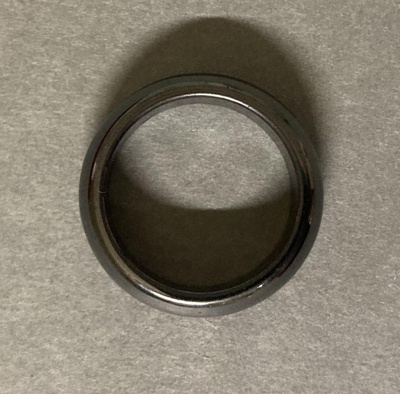Name/TitleAce Ring
About this objectBlack haematite ring, known as an ace ring - a symbol of asexual identity. Date and maker unknown.
Medium and MaterialsOrganic, haematite
MeasurementsDia: 23 mm
Subject and Association KeywordsFashion - accessories, jewellery
Subject and Association Keywordsgender & sexuality
Subject and Association KeywordsLGBTQ+
Subject and Association Descriptionhttps://en.wikipedia.org/wiki/Hematite:
Hematite (/ˈhiːməˌtaɪt, ˈhɛmə-/), also spelled as haematite, is a common iron oxide compound with the formula, Fe2O3 and is widely found in rocks and soils. Hematite is often shaped into beads, tumbling stones, and other jewellery components. Hematite was once used as mourning jewelry. A 1923 reference describes "hematite is sometimes used as settings in mourning jewelry." Certain types of hematite- or iron-oxide-rich clay, especially Armenian bole, have been used in gilding. Hematite is also used in art such as in the creation of intaglio engraved gems. Hematine is a synthetic material sold as magnetic hematite.
https://en.wikipedia.org/wiki/LGBT_symbols:
The ace ring, a black ring worn on the middle finger of one's right hand, is a way asexual people signify their asexuality. The ring is deliberately worn in a similar manner as one would a wedding ring to symbolize marriage. Use of the symbol began in 2005.
Named CollectionGlasgow Women's Library
Object TypeJewellery
Object numberGWL-2015-12
Copyright LicenceAll rights reserved
